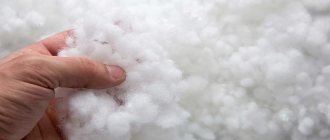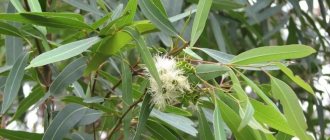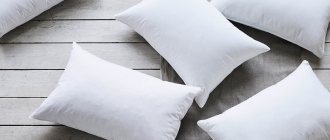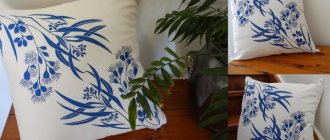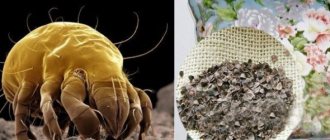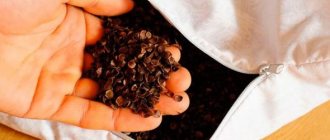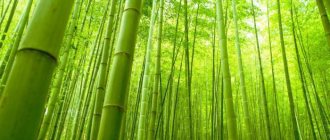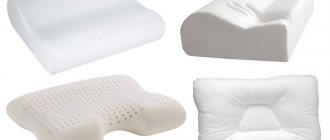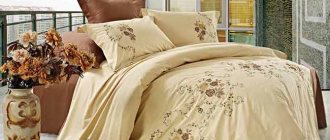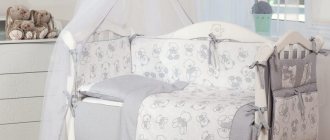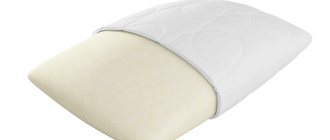Do you fall asleep for a long time and do not feel completely relaxed? Perhaps you simply chose the wrong blanket. There are many different fillers that differ in properties and ease of use. A good blanket should be light and maintain optimal temperature conditions - under such conditions you will relax as much as possible. However, our autumn-winter period is characterized by significant differences, when one night it can be very warm, and on another the thermometer drops tens of degrees below zero. Don't want to fill your closets with bedding for all occasions? Then let's figure out how to choose a blanket by comparing wool and silicone filling. How is each of them convenient?
Description
What is siliconized fiber: Polyester filaments are made from polyester. This is a product of petroleum refining. Synthetic materials are produced with minimal production waste. This microfiber is considered environmentally friendly. Recycled raw materials are often used so as not to pollute the environment.
Siliconized polyester fiber, what is it: it is made in the form of polyester spirals, the outside is treated with silicone. Impregnation increases service life. The spiral threads are combined with each other without glue or other binding components. The result is an elastic one-piece fabric. It is elastic, springy.
Hollow siliconized fiber is used to fill pillows, blankets, furniture, and clothing for allergy sufferers. Thin, with air in the middle. Therefore it is very light.
Artificial swan down is similar to natural down. It has most of the properties of natural down and synthetic materials. It is electrified and may need an antistatic agent. Highly siliconized microfiber is used in such products. It is light and durable.
Siliconized padding polyester is holofiber. For bedding it is used in the form of balls. They are twisted into spirals and connected at high temperatures. Then coated with silicone. For other products it is available in the form of a sheet or sheet.
Comfortable sleep is the key to health
Most often, siliconized fiber is used as a filler for pillows and blankets. We are talking about so-called silicone bedding, with which the domestic consumer is already well acquainted. Such products appeared on the market quite a long time ago, and almost every resident of Russia has experienced their advantages and disadvantages. But this filler is improved every year. Along with new qualities, it receives new names (holofiber, fiber, isosoft, syntapuh). They sound quite complicated, and for many their essence remains incomprehensible, and therefore a little further we will understand the main types of this material.
Siliconized fiber is also used to fill children's bedding, and therefore consumers cannot help but worry about its reliability and safety. Doctors and manufacturers unanimously convince the population that there is nothing dangerous in such products; moreover, they are in many ways superior to traditional down, cotton and wool pillows, blankets and feather beds. Siliconized fiber has improved hygienic characteristics; it does not cause allergic reactions and is not a breeding ground for various bacteria and parasitic microorganisms.
Characteristics of siliconized fiber
The material has pros and cons. Positive sides:
- Due to the structure, heat is retained inside. Suitable for any weather, maintains the desired temperature. Does not make creaking or rustling sounds. Doesn't go outside. The silicone cushion is elastic and quickly takes its original shape. Retains its original appearance for a long time. Non-allergenic fabric, repels dust. Not suitable for the development of mites, microbes, mold. Silicone pillows adapt to the individual anatomy of a person. It is more comfortable to sleep on them than on regular ones.
- Low price. Everyone will find a suitable product. Good air exchange. Easy product care. They are soft and easy to store. Silicone blankets are very light. The weight is almost not felt, it is pleasant to sleep under them. The filler is odorless. Does not absorb foreign odors. It does not require special care. Easy to machine wash. Dries quickly.
In addition to advantages and disadvantages, there are:
- Does not allow moisture to pass through. People with excessive sweating find it unpleasant to sleep on a synthetic bed, especially in the summer. Poor support for a sore back or neck. The pillow filling is too soft. It won't last long. After a few years it will begin to clump together.
Before purchasing, you should consider what is more important – cost or durability. These are good products for their price.
Is siliconized fiber harmful to humans? No, synthetic materials are suitable even for allergy sufferers and asthmatics. Only people with severe sweating will find it unpleasant to sleep in such a bed. The harmfulness of many natural fillers is much greater. Silicone filling in blankets is not suitable if sweat is a problem.
Siliconized fiber in pillows is not suitable for people with spinal diseases. A healthy person needs enough support from such a pillow; a sick person needs something denser.
Advantages and disadvantages of synthetic pillow fillings. Customer Reviews
Surely readers will be interested in the question of what consumers think about such a filler for pillows and blankets as siliconized fiber. Reviews about it are mostly positive. Among the advantages, it is worth noting its hypoallergenicity, availability and safety.
There are also disadvantages, but there are very few of them. Buyers most often do not like the fact that silicone blankets and pillows sparkle and float, but this flaw can be easily corrected if you use bedding made from natural fabrics. Also, many people criticize pillows made of siliconized fiber because they are springy (especially new ones). However, by removing a little filling from the pillow, you can easily adjust its height.
Rules of care
Products with silicone filling can be machine washed without any problems. Basic recommendations:
- Use the mode for delicate fabrics. The detergent is liquid so that it penetrates deeper and is completely washed out. Do not use bleach or aggressive detergents. Air conditioning is also not recommended. Suitable water temperature is no more than 40 degrees. For heavy contamination, 60 degrees is allowed. Do not wash frequently at this temperature.
- Squeeze the products in the machine at medium speed. Dry naturally in a ventilated room. The use of a fan is allowed. Straighten and leave until dry. Items with swan down are shaken periodically during the drying process to prevent them from pilling.
A pillow or blanket filled with siliconized fiber is aired outside when the season changes. Store bedding in vacuum bags or in regular form.
Wool blankets
The first thing I want to say is that when sewing modern blankets, the wool is wrapped in a thick cover, usually made of cotton. That is why the prickly natural material does not cause discomfort during operation. The second nuance that may scare away a potential buyer from purchasing a blanket filled with natural wool is the specific smell of animals. No need to worry - a high-quality product does not smell at all. The advantages of wool blankets are:
- preventing the "greenhouse effect". The material breathes, preventing the body from overheating;
- ensuring dryness and comfort. Wool is capable of absorbing moisture up to a third of its own weight, while remaining dry, because in parallel with the absorption process, liquid evaporation occurs. Even going to bed very warm, you won’t freeze by the morning;
- environmental friendliness The antibacterial properties of wool have long been known, preventing the proliferation of microbes released through human sweat;
- beneficial effects on health. Helps normalize blood pressure, serves as a prophylactic for diseases of the spine and joints;
- ease of use. The ability of wool to self-clean allows you to keep the product clean for a long time. The material does not have a static effect, so small particles and dust are not attracted;
- long service life - up to 9 years.
Wool also has disadvantages. Lanolin, which is coated with natural fibers, not only has a positive and healing effect, but can cause allergies. If stored and cared for improperly, dust mites can grow in the wool. Blankets cake over time, providing uneven distribution of heat, so it is recommended to periodically change them once every 4-5 years.
Important! Wool products need to be properly cared for. Detailed information about this is indicated on the product label. Even if washing is allowed, you must use cool water and special products with lanolin; in extreme cases, regular shampoo will do.
Other fillers, how they differ from siliconized fiber
Holfitex, what is it: polyester thread, not treated with silicone. It is also used to make filler. Elastic, soft, shape-resistant fiber. It comes in the form of balls and layers. Accessories with such internals will last two to three years.
Eucalyptus and bamboo varieties are made from viscose. These are artificial options. They perfectly absorb and release moisture and are distinguished by antimicrobial properties. Not allergic. They don't smell or make sounds. Service life up to three years.
How is silicone different from padding polyester?
All the negativity that consumers have regarding bedding with artificial filler is mainly associated with padding polyester. This substance is, in principle, unsuitable for sewing blankets and pillows. This is a material that is used to make bedspreads, bumpers for children's beds, and decorative pillows. This is primarily due to the fact that synthetic winterizer does not have sufficient hygienic characteristics:
- hygroscopicity;
- ventilation;
- sufficient cleanliness.
Moreover, synthetic padding pillows and blankets become loose within a few months of use. In less than a year, the product becomes flat and shapeless, especially if it has been subjected to frequent washing. Silicone, on the contrary, will last at least 3 years. Bedding with such filling can be washed, after which its fibers not only do not get knocked down, but restore their original shape.
Which pillow filling to choose?
However, determining the best filling for sleep pillows without certain knowledge is not so easy - in order to buy the right product, sometimes you have to study dozens or even hundreds of options. It is worth noting that there are not many filling options, and knowing all their basic properties and features, you can easily find a high-quality model with optimal characteristics for yourself.
Natural fillers
The materials of this group are created from natural components, which guarantees their high environmental friendliness and durability - they often last longer than artificial compounds. At the same time, they also have a drawback: in some cases they can cause allergies, so if you are hypersensitive to the filling, the pillow will have to be changed.
Down and feather
Once the most popular natural material for stuffing pillows. It is down and feathers collected during the molting period of poultry. Products with such a filler are quite light, quickly remove moisture and retain heat well, which is especially important in a northern climate. However, many people refuse such models because of their fragility: over time, the feathers get knocked down and form clumps, they can break and come out through the seams of the pillow. In addition, products with such filling require regular drying in the sun and special dry cleaning, since washing is not allowed for them.
Wool
Sheep or camel wool is another affordable and popular material for stuffing bedding. The advantages of such a filler include comfort, an optimal combination of softness and elasticity, and the ability to store heat. Wool is also credited with healing properties, so these pillows are recommended for those who experience problems with the spine.
Disadvantages include extremely rapid loss of shape and short service life due to the difficulty of maintenance. Due to the high hygroscopicity of wool, these pillows cannot be washed, so over time they can become a breeding ground for pathogenic microbes.
Bamboo
The material, for which young bamboo shoots serve as raw materials, is amazingly light and looks like cotton wool or padding polyester. However, bamboo has a lot of advantages over these fillers: it is quite elastic, hygroscopic, allows air to pass through well, has bactericidal properties and is easy to care for - regular washing is allowed for these pillows.
At the same time, such products are not recommended for use in humid climates due to their ability to quickly absorb moisture and lose lightness and elasticity. In addition, regular beating is required to maintain their volume.
Buckwheat husk
The husk or husk of buckwheat grains is an environmentally friendly natural filler with orthopedic properties. Buckwheat pillows keep their shape perfectly, provide support for the head and neck in an anatomically correct position, do not cause allergies and do not create a favorable environment for the proliferation of microorganisms.
Among the disadvantages of such products, rustling noise during use is often mentioned. Also, such pillows are quite weighty, but many consider this rather an advantage, since they lie smoother and more securely.
Latex
These models are based on blocks made from the foamed sap of the rubber tree, also known as Hevea. When answering the question of which pillow filling is best, many people name latex, even despite the rather high price.
There are good reasons for this: the material has remarkable elasticity, is moderately soft, provides comfortable support, does not cause allergies, prevents the growth of bacteria and can last 5 years or even more. The only drawback is the inability to absorb moisture, so if you sweat excessively, such pillows are not recommended.
What does the cost depend on?
Wool blankets belong to the middle price category. If in a store you come across a product worth several hundred rubles, then most likely it is an artificial filler. The price of a blanket depends on two factors - the density of the product and the type of wool. The first affects weight and degree of warmth. There are different types of wool blankets:
- light: 150–200 g/m2;
- universal: 250–300 g/m2;
- standard: 350–400 g/m2.
Interesting! Wool blankets can regulate the body temperature of a sleeping person by removing or retaining heat.
The second factor that determines cost is what kind of wool the blankets are made from. They are:
- sheep The most common and inexpensive blankets. They have good warming properties and a long service life;
- merino The wool of this breed of sheep is characterized by high durability, it is more resilient and elastic. It produces warm and hygroscopic products;
- camel Blankets will protect you from sudden temperature changes. Camel wool is 2 times lighter than sheep's wool. Thanks to its natural lanolin coating, it has a healing effect against radiculitis, muscle pain and other diseases.
- made from alpaca wool. Such products are highly expensive due to the difficulty of obtaining raw materials - the animals live in the highlands of South America. Alpaca wool blankets are durable and their long fibers do not pill. The products are lightweight and hygroscopic. Due to the special structure of the fiber, the material does not irritate the skin, so it may not be enclosed in a cotton cover;
- cashmere They are considered the most expensive. Despite their apparent thinness and weightlessness, they provide excellent warmth in severe frost. The peculiarity of natural cashmere is hypoallergenic.
It is believed that natural filler materials are not suitable for allergy sufferers.
Artificial fillers
Modern materials for stuffing pillows are created on the basis of synthetic fibers, to which manufacturers impart the necessary structure and properties. Current technologies make it possible to adapt artificial fillers to any wishes and needs and at the same time ensure their durability and almost absolute hypoallergenicity.
Silicone
Hollow siliconized fibers or polyester beads are one of the most popular materials for filling pillows today. It is exceptionally light and soft, quite elastic, does not attract dust and does not cause allergic reactions. Caring for this product is quite simple, since it only needs regular washing on a delicate cycle. However, the service life of pillows with silicone is short - a maximum of 3 years.
Polyester fiber
Thanks to their special composition, polyester fibers retain heat well, but at the same time allow air to pass through, effectively remove moisture and are easy to wash. However, due to their high softness, such pillows do not provide adequate support for the head and neck, so they are most often recommended for occasional use and only in the absence of problems with the spine.
Microfiber
Another name for the filler is artificial down. It has a particularly elastic texture and lightness, does not absorb odors and excess moisture and is quickly restored with simple care. The disadvantages of the material include the ability to accumulate static electricity.
Viscoelastic
Another name for viscoelastic foams, they are most often known as “memory” or memory foam materials. Many people believe that viscoelastic is the best filling for pillows, largely due to its ability to provide gentle support, following the contours of the head and neck, excellent shape retention and non-allergenic properties. Foam pillows are often included in the orthopedic category. The disadvantages include the not always affordable price and the fear of water - under its influence, viscalastic loses its adaptability.
Microgel
The material, also known as an artificial analogue of natural swan down, has a number of advantages, including amazing lightness, elasticity, the ability to quickly restore its original shape and provide orthopedic support, as well as long-term operation, which for pillows with microgel is at least 7 years. The cost of such models is impressive, but this is compensated by their special properties.
Holofiber
Light and soft, but at the same time one of the most inexpensive materials. It has sufficient elasticity and is hypoallergenic, but can wrinkle and quickly lose its shape, so it is recommended to change such pillows every 2 years.
Conclusions and recommendations
Modern blankets are eco-friendly and warm. They have a long service life, but still, which blanket is better - wool or silicone fiber? Compared to natural filler, artificial filler has less moisture absorption and breathability. It does not have a healing effect, but also does not have a harmful effect on the body. Along with the huge list of positive properties of wool, the possibility of allergies and the higher price require more serious consideration of the purchase. Silicone fiber does not have such disadvantages, but is unable to provide the level of comfort that natural wool blankets provide.
Practicality is an important factor that often determines the choice of filler. The ability to wash products with silicone in a regular machine makes them an excellent option not only for personal home use, but also for boarding houses and recreation centers that regularly receive large numbers of visitors. Caring for wool blankets is not so easy - you may have to periodically take them to the dry cleaner or wash them by hand. If this feature does not become a heavy burden for you, you can safely buy the product - it will help create the necessary conditions for comfortable, healthy sleep.
A variety of natural fillers.
Duck or goose down, cotton wool or sheep's wool, bamboo or latex - with such a variety, it is almost impossible to decide which filler is better. There are two types of natural ones: animal and plant origin. Let's start with the first one.
Feather
The combination of down and feathers is a classic and popular option, despite the relatively high prices of the products. It easily allows air to pass through, regulates heat exchange and does not retain odors, ensuring a comfortable sleep. Experts consider easy restoration of shape to be a separate advantage.
The main problem with traditional products is feathers, which over time break through the surface and are partially destroyed. However, modern production makes it possible to get rid of this drawback due to the multi-layer structure and impregnation of feathers. A more serious drawback is the possibility of allergic reactions. That is why these are clearly not the best fillings for a baby pillow.
New doesn't always mean worse
For centuries, people have placed under their heads and covered themselves with bedding, the basis of which was animal hair, down and feathers of birds, or various fillers of plant origin (processed flax stalks, buckwheat husks). This is the main argument heard by defenders of natural materials used for stuffing pillows and blankets. Yes, of course, they have the necessary hygroscopicity and environmental safety, and such accessories will last for several decades, which cannot be said about modern analogues, which contain siliconized fiber inside.
But, as practice shows, the vast majority of people who tried to sleep on pillows with artificial filling forever forgot about their old bedding, putting them on high mezzanines or simply throwing them away.
Synthetic fillers: definitely not harmful?
A synthetic composition is considered the best option if a person is prone to allergic reactions. At the same time, modern technologies make it possible to create sleep products based on synthetics, which are safer for health than some natural materials.
Silicone
Silicone is one of the highest quality synthetic materials that almost instantly restores its shape. Silicone in the form of balls lasts the longest because it does not roll off over time. These pillows are always small in size, thereby enhancing their anatomical properties. They do not have a specific smell, so they are suitable for pregnant women even in the very early stages.
Polyester fiber
Despite the positive properties of silicone, the best pillow for pregnant women is still made from polyester fiber. This is a non-woven material treated with silicone. This combination prevents the material from churning. It is also worth noting that it does not absorb odors or moisture due to the fact that the air inside circulates freely. You can also buy this model for a child’s room, since the filler does not cause allergies.
Microfiber
If you are allergic to natural fillers but like the texture of down, consider microfiber. This is another favorite for pregnant women, as products made from it are light, airy and odorless. These models make it comfortable to sleep on your side. They do not collect dust and are easy to clean. The only problem that the buyer may encounter is electrification. You can avoid this by choosing combined options.
Viscoelastic
Viscoelastic is a popular and elastic fiber that allows you to create anatomical pillows with enhanced supporting properties. The model adapts to the shape of your head, but in the morning, while you drink coffee, it will restore its shape. It is pleasant to fall asleep on it at any time of the year due to good heat exchange. Both children and adults will sleep on it with pleasure. There is one important “but”: the product cannot be washed. The price of the material is quite high, but it is worth it.
Microgel
Microgel is another option that will get you noticed if you are looking to buy a good sleeping pillow. It combines the following properties:
It has practically no disadvantages. The only thing is that after purchasing the product, you should ventilate it so that the specific smell of production disappears. In addition, it is recommended to use a double pillowcase.
Origin story
In 1949, Russian scientists obtained polyester, on the basis of which they then began to produce silicone. The spiral-shaped fibers of this material are connected to each other by a thermal method, which gives an advantage in operation, in comparison with other materials, at low temperatures and high humidity. No glue is used in production, which is why it is hypoallergenic and wear-resistant.
Features of the composition of padding polyester with the addition of silicone
- moisture resistance;
- environmental friendliness;
- good sound and heat insulation;
- retains heat at low temperatures;
- hypoallergenic;
- hygiene;
- durability;
- softness;
- ease;
- does not deform, quickly takes on its appearance after compression;
- insects do not appear;
- does not absorb odors.
Main characteristics of the material
Silicone is a porous material. Its pores contain air, thanks to which it has good thermal insulation. For countries with cold climates, products with such filling will be a very good option for winter clothing. In such clothes, the price corresponds to the quality. The main thing is that when buying clothes, the choice falls on products with breathable outer material, otherwise the filler will also not allow air to pass through.
How to choose the best pillow for sleeping?
So which filling makes the pillows the most comfortable? To accurately decide which one is best to buy, consider all the options and check out the products in person. It’s worth finding out in advance what types of products are available so you can roughly understand what’s right for you. A children's pillow is selected based on age, since children's sleep is characterized by mobility. In addition, you should always consider the possibility of allergic reactions. Thus, buy comfortable models just for you, focusing on your body and characteristics.
Source
